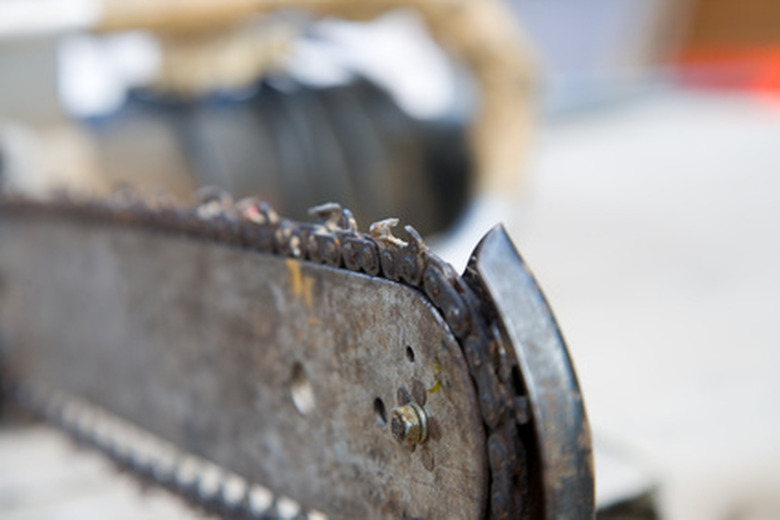How To Cut Down Oak Trees
Things Needed
- Branch loppers
- Hatchet
- Chainsaw
Oak trees are sturdy, old-growth trees that have a reputation for dense wood. Because of this, oak is a popular wood for furniture and doors. Oaks should never be planted near power lines, homes or other structures due to the spreading habit of the trees. Oaks such as live oak may grow up to 50 feet tall and 80 feet wide. If you have inadvertently planted an oak tree too closely to your home or another structure, you may be forced to remove it.
Step 1
Examine the tree to determine if the trunk bends in a direction that would cause it to fall naturally. Note the direction in which the wind is blowing to determine if the wind's direction would factor into the way in which the tree may fall. These factors will determine the way in which you will cut down the tree.
- Oak trees are sturdy, old-growth trees that have a reputation for dense wood.
- Examine the tree to determine if the trunk bends in a direction that would cause it to fall naturally.
Step 2
Look over the area beneath the tree and remove any items that could be damaged by the tree's fall. This includes cars parked in the path of the falling tree.
Step 3
Plan an escape route that you will use to move away from the falling tree. Use a hatchet or branch loppers to cut away any roots or sticks that could trip you. Shift any large stones out of your way.
Step 4
Make a wedge-shaped cut, known as an undercut, into the tree with a chainsaw. The cut should be open at a 45-degree angle in the direction that you want the tree to fall, and should extend one-third of the way through the tree near the bottom of the trunk.
- Look over the area beneath the tree and remove any items that could be damaged by the tree's fall.
Step 5
Make a thin cut that runs perpendicular to the tree's trunk in the opposite side of the trunk from the undercut. This cut is known as a back cut. The back cut should be located just slightly higher on the tree's trunk than the point of the undercut. It should extend two-thirds of the way through the tree's trunk, and should stop slightly short of the undercut. The tree should tilt and begin to fall in the direction that the undercut opens to.
Step 6
Step away from the falling tree as it begins to tilt and move up the planned escape route. Wait several minutes after the tree has fallen before returning to avoid being hit by falling debris, known as widowmakers.
- Make a thin cut that runs perpendicular to the tree's trunk in the opposite side of the trunk from the undercut.
- The back cut should be located just slightly higher on the tree's trunk than the point of the undercut.
Warning
Never attempt to fell a tree yourself if it is near power lines. Hire a professional to remove trees under hazardous conditions. Wear protective clothing, including a hardhat, gloves, long sleeves, long pants and closed-toed shoes while removing trees. Never use a chainsaw in a position higher than your shoulders. Doing so can cause you to lose control of the blade and injure yourself.
